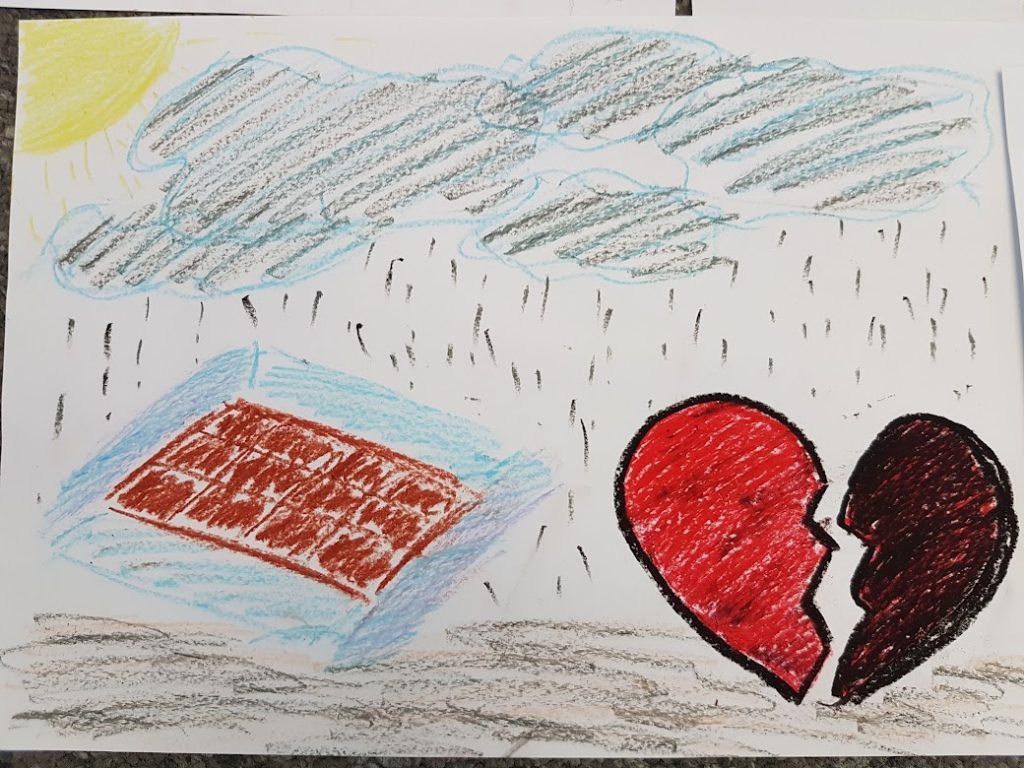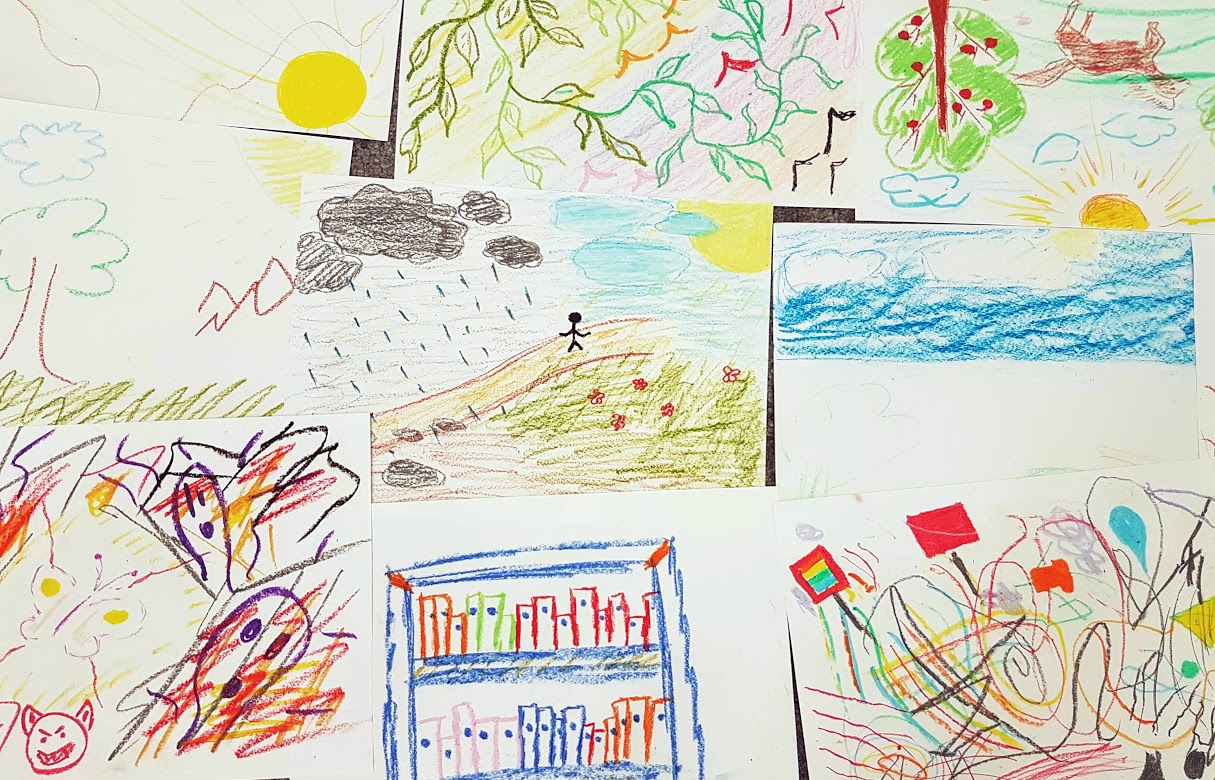20 Emotional Weather Systems: Making Friends with our Feelings
“Meet your feelings at the door and invite them in For Tea.” – Rumi
Emotional health is all about taking time to explore how we are feeling in the present moment and making friends with the reality of our inner experience. Of course, this is complicated and challenging when we are overwhelmed with intense emotions that are uncomfortable or painful. However, allowing oneself to fully experience an emotion is how we process our feelings and let them flow through us. The first step to emotional regulation is “being with” the emotion with acceptance and curiosity:
Emotional understanding may involve a variety of skills. It might involve emotional awareness, or recognizing that we are having an emotion. It likely involves having emotional clarity—knowing that we are feeling sad rather than fear, for example. And it can be served by emotional granularity—or being able to distinguish between similar emotions. Overall, understanding the nature of emotion can do a lot to help us cope with our emotions and make the most of them. Berkley Wellbeing Institute
A mindful approach to emotional awareness involves noticing the texture of the feeling and then exploring its energetic qualities in the body, without getting lost in all the words and stories about why you are having this particular emotional response. The following exercise can be adapted to support individuals, groups or classes of many different ages to increase their emotional literacy and understanding of their emotional worlds
Emotional Weather Systems is an excercise borrowed from Margaret Jones Callahan a wonderful artist, art therapist and author of Mindfulness Based Art Book: Spark. Margaret’s e-book provides mindful art activities for the classroom, counselling office or workshops. It includes meditative scripts and emotionally safe ways to engage participants in art explorations and debriefings of the personal meaning of their creations.
I have used the following Margaret Callahan excercise with individuals, classes and workshop participants. This activity can be both a personal exploration and a group bonding experience.
Purpose
The purpose of this activity is to gain awareness of the energetic quality of emotions and to find visual ways of expressing and accepting one’s emotional reality.
Learning Objectives
Participants will:
- Check-in with their current emotional state.
- Reflect on the metaphor of emotions being like weather systems that shift and change.
- Express their emotions with colours and images that illustrate their emotional weather.
- Share their “emotional weather” art with a small group.
- Reflect on the impact one person’s emotional weather might have on others when you are together in a complex “weather system.”
Activity Directions:
- Reflection: Invite the group to sit comfortably and close their eyes or just soft focus if they are uncomfortable with their eyes closed. Read the following script:
Emotional Weather Meditation
This is a quiet time to tune into your experience of this present moment. Notice the weight of your body sitting in the chair. Notice your feet touching the ground and contemplate that deep beneath the soles of your feet is the earth that we are part of.
Now, pay attention to your breath going in and out of your body. Notice how it enters and fills your lungs. Notice how it leaves your body and joins the atmosphere around you. For one minute we will just be silent as you ride the waves of your breath as it comes in and out of your body.
Now, take a moment to reflect on how you are feeling in this very moment. What thoughts bubble up into your mind. What emotions are you experiencing? Where do you feel them in your body? What colour most closely matches your emotion right now? Are there any images that come into your mind with this emotion? If your emotions was some kind of weather, what would that weather look like? If your emotion had weight or texture what would it be – smooth, spiky, spongey, hard, wispy . . . . . . . . .
Take another few moments to just observe your emotion. Try not to judge it or want it to go away. Instead welcome it and try to get to know its unique texture. What does this emotion want you to know?
Pause.
In a moment I am going to ask you to open your eyes. Feel your feet on the ground. Notice the weight of your body in the chair. When you are ready to open your eyes, take a moment to come back into the safe space of our room. We will be staying silent for the next 15 minutes, so you can continue to access your emotional world without words.
Go to the table and take a piece of paper and felt pens, crayons or pastels that reflect the colours of your present emotions. Draw what your emotional weather is like right now. Don’t worry about it looking like “art” as this is just an opportunity for you to play with the colours and images that express your current inner world.

2. Create weather pictures: Ask participants to stay with silence for 15 minutes as they find coloured pens, pencils or pastels that they would like to use to express their emotional weather. You could play instrumental music that adds to a sense of reflection.
3. Full group debrief: Gently bring the group back together and ask for some reflections on their experience of noticing their emotions and trying to capture them on paper.
4. Small group discussion: Tell the group that they are now going to get into small groups and put their pictures together to make a weather system. (Number off the full group so that everyone is in a small group of 4-5 people). Post the following questions on the screen or whiteboard:
Small Group Reflection Questions:
- What does your emotional weather picture mean to you?
- What do you need from others when you are going through wet or stormy times?
- How does one person’s emotions impact others in a group? (i.e. Humans in groups create their own eco-systems where feelings can be contagious).
- If a weather forecaster was describing this weather system, what might they say? (ie. sunny with a chance of rain)
- Weather is always shifting and changing and it often blows through an environment creating different conditions throughout a day. How might it be helpful to view our emotions this way?
- What themes do you see when you look at all of the weather pictures in your group together?

6. Full Group Discussion: Tell us a bit about your group weather system and reflections.
- Are there any other thoughts or insights on this activity?
- How might art and creative expression be helpful in understanding and processing emotions?
- How might you use this activity in your everyday life?
- How are emotions understood and processed in your family, community and culture?
This activity was facilitated one week after a student died on campus. It was one part of an overall response to a traumatic event that was giving students an opportunity to normalize their emotional responses and share feelings and thoughts with each other. Creative expression allows people to access their emotions nonverbally and some students who have difficulty expressing themselves in words are able to share their experience through colours and drawings.
Students explored their emotional weather systems and recognized that understanding and managing feelings is part of emotional intelligence. Some of the points they made about navigating challenging emotions included:
- Feelings are energetic forces in our body. They give us information about how the world affects us.
- Emotions are influenced by our thoughts and beliefs about situations. Your interpretation of an event can influence your feelings. For example, if you receive a low mark on a quiz you can think: ” I am not good at math, I’m going to fail. I’m stupid,” and you will probably feel discouraged and depressed. If you use a more optimistic mind-set or style of thinking you could say to yourself: “I didn’t do as well as I hoped on this quiz. What can I learn from this so I improve for next time? What has helped me succeed in the past?” With this style of thinking you are more likely to problem-solve and you may be disappointed, but you will use the situation to improve.
- All feelings are o.k. – get to know them, accept them and express them with writing, art or conversations with trusted people. Feeling our feelings is how we process them.
- Everyone is totally different in how they process events and challenges – trust yourself, or talk to someone if experiences like grief, stress, depression, anger or anxiety go on for a long period of time or seem to be impacting your ability to function.
- Many challenging emotions start to shift when you get regular exercise, sleep and social connections. When you feel stuck in a difficult emotional pattern, try being active and see if it helps. Creative expression can also help to channel feelings. Emotional Weather Discussion Naryn LifeSkills
“Feeling the feelings, is the healing” – quote from a World Cafe’s doodled insights at Selkirk College
Materials and Resources Needed:
- Sheets of paper for each participants
- Variety of art materials such as markers, pastels, crayons and possibly paints
- Instrumental music playing while people are working on their weather pictures.
- Masking tape if you want to see the full weather system on the wall.
